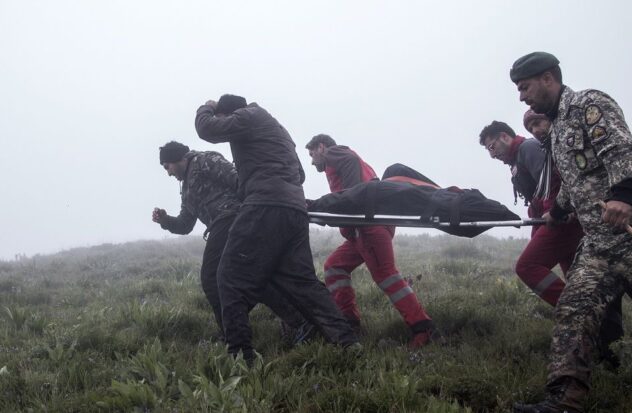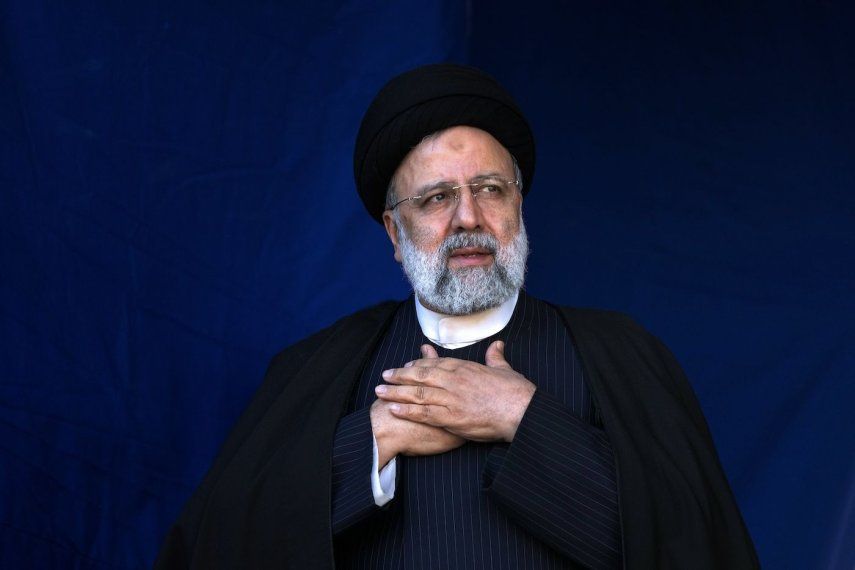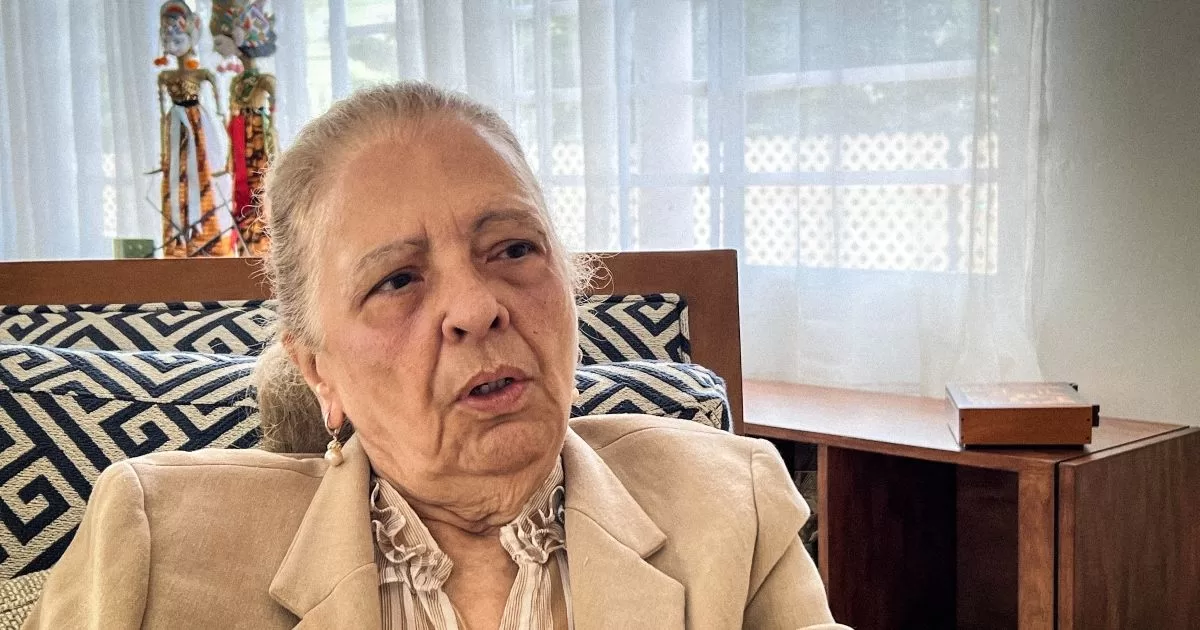The event occurred amid tensions in the Middle East due to the war between Israel and Hamas. Under the leadership of Iranian Supreme Leader Ayatollah Ali Khamenei, Raisi, who was 63, launched an unprecedented drone and missile attack against Israel last month.
Khamenei announced on Monday that the country’s first vice president, Mohammad Mokhber, would serve as acting president until elections were held.
Under Raisi, Iran enriched uranium to levels closer to weapons-grade material than ever before, further raising tensions with the West as Tehran also supplied bomb-carrying drones to Russia for its war in Ukraine and to armed militias across the country. the region.
On the other hand, Iran has been registering massive protests for years against its Shiite theocracy due to economic problems and in favor of women’s rights, which is why the moment is extremely sensitive for Tehran and for the future of the country.
The country’s state television did not report the cause of the helicopter crash in Iran’s East Azerbaijan province.
Among the dead was Foreign Minister Hossein Amirabdollahian, 60. Also traveling on the helicopter were the governor of East Azerbaijan province, a prominent cleric from Tabriz, three crew members and a member of the Revolutionary Guard, according to the state news agency IRNA. IRNA said eight people had died in total, including crew members, in the crash of the Bell helicopter, which Iran bought in the early 2000s.
Iran is short of parts for aircraft, which often fly without safety checks, due to Western sanctions. For this reason, former Iranian Foreign Minister Mohammad Javad Zarif tried to blame the United States for the incident.
“One of the main culprits for yesterday’s tragedy is the United States, which… embargoed the sale of aircraft and aviation parts to Iran and does not allow the people of Iran to enjoy good aviation facilities,” Zarif said. “This will be recorded on the list of American crimes against the Iranian people.”
The state television station did not initially indicate a cause for the accident, which occurred in the Iranian province of East Azerbaijan.
The United States has yet to comment publicly on Raisi’s death. Ali Bagheri Kani, Iran’s nuclear negotiator, will serve as acting foreign minister, according to state television.
Turkish authorities published early Monday what they described as drone images showing what appeared to be a fire in an uninhabited area that they “suspect to be the remains of the helicopter.” Coordinates shown in the video placed the fire about 20 kilometers (12 miles) south of the Azerbaijan-Iran border, on the side of a steep mountain.
Images published on Monday by IRNA showed what the agency described as the scene of the accident, facing a steep valley in a green mountain range. In the video, soldiers could be heard speaking in the local Azeri language saying “there he is, we found him.”
Condolences began pouring in after Iran confirmed there were no survivors of the crash. Neighboring Pakistan announced a day of mourning and Indian Prime Minister Narendra Modi said in a post on X that his country “stands with Iran in this moment of grief.” The leaders of Egypt and Jordan also conveyed their condolences, as did Syrian President Bashar Assad. Lebanon and Syria declared three days of mourning.
Azerbaijan’s President Ilhan Aliyev said he and his government were “deeply shocked.” Raisi was returning on Sunday from the Iranian border with Azerbaijan, where he had inaugurated a dam with Aliyev before the incident.
Turkish President Recep Tayyip Erdogan and Chinese President Xi Jinping conveyed their condolences. Russian President Vladimir Putin described Raisi as “a true friend of Russia” in a statement released by the Kremlin.
Khamenei, who on Sunday night had asked for prayers for the passengers of the aircraft, stressed that the Iranian government would continue working no matter what happened.
Under the Iranian constitution, the country’s vice president takes power if the president dies, with Khamenei’s consent, and new presidential elections are called in 50 days. Khamenei’s condolence message on Monday over Raisi’s death declared five days of mourning and noted that Mokhber had assumed the acting presidency.
Mokhber had already started receiving calls from foreign authorities and governments in Raisi’s absence, according to state media.
The government held an emergency meeting as state media announced the news on Monday morning. The government later issued a statement promising that it would continue on the path set by Raisi and that “with the help of God and the people, there will be no problem managing the country.”
Raisi, a hardline politician who had previously led the country’s judiciary, was seen as a protégé of Khamenei and some analysts had suggested he could succeed the 85-year-old leader after Khamenei’s death or resignation.
With the death of Raisi, the only other person who has been considered for the position is Mojtaba Khamenei, 55 years old and son of the supreme leader. However, some have expressed reservations that the third to hold the position since 1979 is a relative, especially after the Islamic Revolution overthrew the hereditary monarchy of the Pahlavi dynasty.
Raisi won the 2021 presidential election, the election with the lowest turnout in the country’s history. The president was sanctioned by the United States due in part to his involvement in the mass executions of thousands of political prisoners in 1988 after a bloody war between Iran and Iraq.
During Raisi’s tenure, Iran enriched uranium near weapons level and resisted international inspections. Iran has armed Russia in its war in Ukraine, as well as launching a massive drone and missile attack against Israel during its war against Hamas in the Gaza Strip. It has also continued to arm groups for its proxy war in the Middle East, such as the Houthi rebels in Yemen and the Lebanese militia Hezbollah.
Meanwhile, mass protests in the country have continued for years. The most recent was related to the death in 2022 of Mahsa Amini, a woman who was detained for allegedly not wearing the hijab, a scarf that covers her hair, to the liking of the authorities. The crackdown that continued for months killed more than 500 people and more than 22,000 others were detained.
In March, a UN investigative committee concluded that Iran was responsible for the “physical violence” that led to Amini’s death.
Raisi is the second president of Iran to die in office. In 1981, a bomb killed President Mohammad Ali Rajai in the days of chaos after the revolution.
___
Source: With information from AP and AFP



